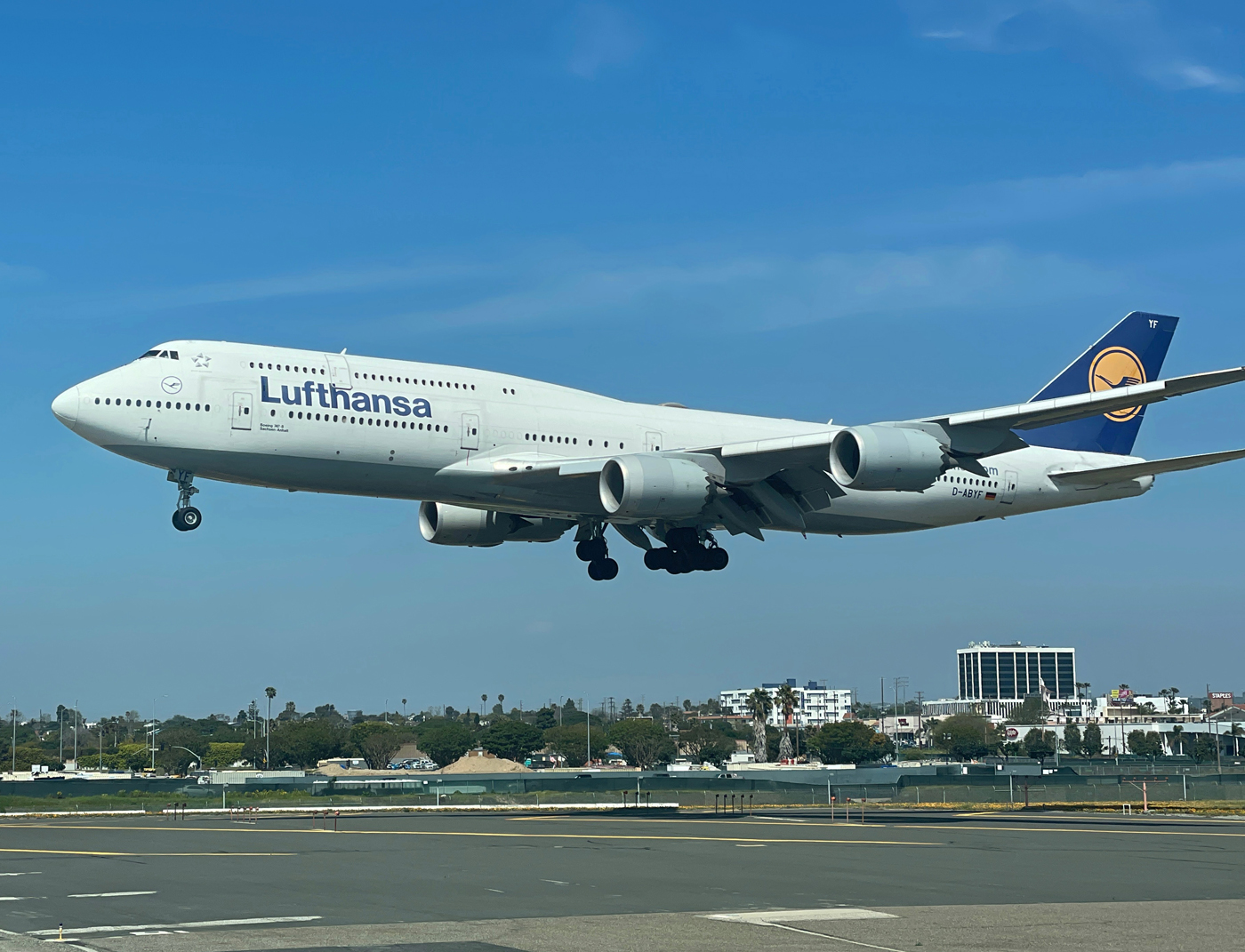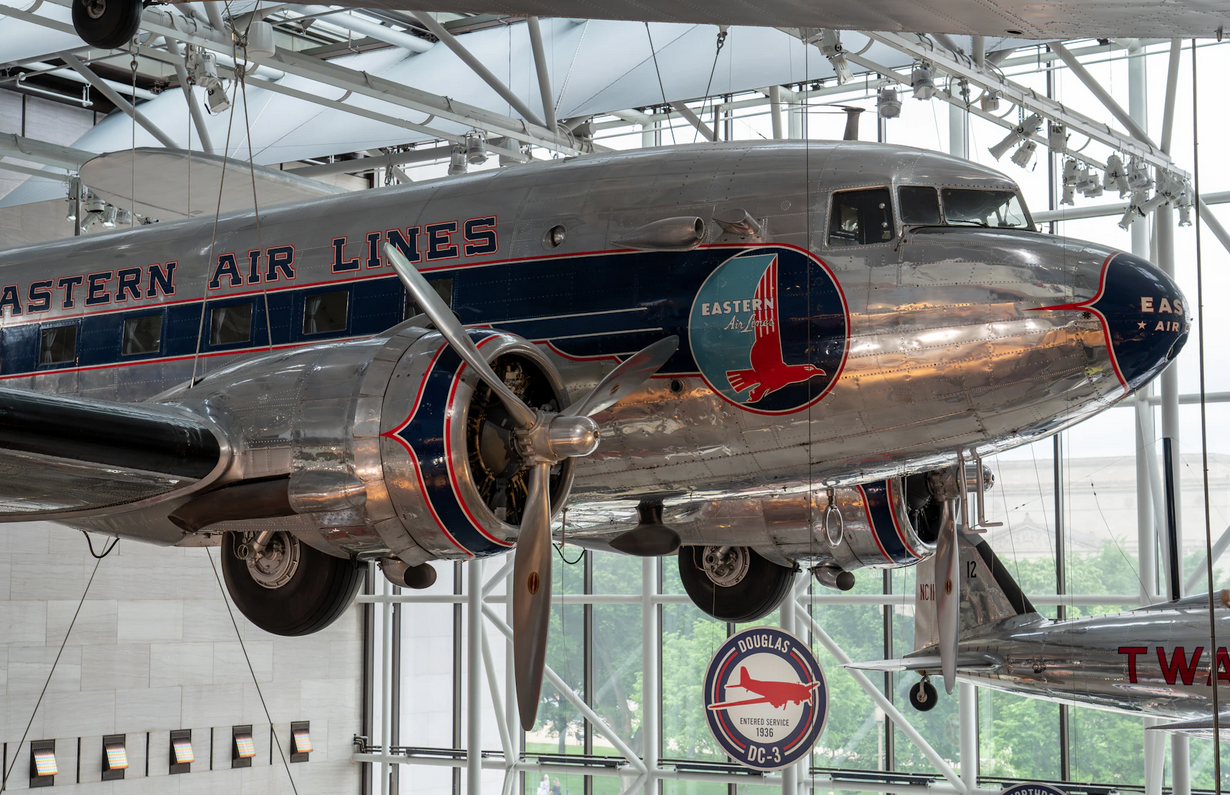Top Flight

September 23, 2024
I FOUND THIS LIST, over at The Atlantic, published back in 2015: What Was the Most Significant Airplane Flight in History? A roll call of aviation luminaries, myself not included, was invited to weigh in.
The Enola Gay, bound for Hiroshima, that’s a heavy one. And from my fellow blogger Christine Negroni: “In 1914, Abram Pheil became the very first passenger on the very first passenger flight, a 23-minute trip from St. Petersburg, Florida to Tampa. Like the 12-second flight of the Wright Brothers eleven years earlier, his brief time in the air has had an enormous impact on the world.”
It’s hard to argue with her. But some of the other entries, I don’t know. D.B. Cooper, come on. Lindbergh’s solo crossing? Nah. Of course, there’s no right or wrong answer. The idea of lists like these is to draw from different perspectives.
Had I been asked, my entry for history’s most significant flight would be Pan Am’s inaugural of the Boeing 747 in 1970.
Pan Am’s Clipper Victor kicked things off between New York and London on January 21st, about six months after the success of Apollo 11. Why this flight? Well, if we broaden this conversation to planes generally, rather than specific flights, we have to rank the Boeing 747 as the most influential aircraft of all time. The industry’s first-ever widebody, it ushered in the concept of affordable long-haul flying, changing global travel as we knew it — and know it still — perhaps more than any other invention.
Plus, it was a gorgeous design. In a production run lasting more than fifty years, Boeing would sell more than a thousand of them.
(Ironically the Victor was the very same 747 destroyed at Tenerife in 1977, in history’s worst aviation disaster. Remarkably, this single aircraft was involved in two of the most historic flights of all time, one celebratory and the other catastrophic.)

Runner up, for influence if not aesthetics, would be the Douglas DC-3.
Rolled out in 1935, the DC-3 wasn’t really the first of anything, but it perfected the evolution of the all-metal passenger transport to become the first truly profitable and mass-produced airliner. So many thousands of DC-3s were built, in civilian and military versions, both in the U.S. and under license abroad, that nobody knows for sure the actual count.
As late as the 1960s more than a thousand DC-3s were still in airline service. Today every passenger plane, from a ten-seater to the 787, bears a debt to this antique piston twin.

Much the same way, Boeing’s four-engined 707 revolutionized air travel forever.
The 707 was third in jetliner chronology — the star-crossed de Havilland Comet and the Soviet Union’s Tu-104 copycat came before it — but it was faster, with greater range and more seats, taking the Comet’s ill fortune and turning it into gold, safely crossing oceans and continents at twice the speed of mainstay propliners.
When, in 1958, Pan Am launched the 707 between New York and Paris (just like Lindbergh), the jet age truly was born. A year later American Airlines inaugurated transcon 707 nonstops between New York and Los Angeles. The poet Carl Sandburg was aboard.
Yes, well, sorry to some of you who’d lobby for something flashier. The Concorde, I know, makes a prettier icon than the 707 or a DC-3. But while sexy and famous, it proved little beyond the non-viability of the SST concept. Perhaps when hydrogen replaces kerosene this category will be reborn.

Photo Credits:
Lufthansa 747 by the author.
Pan Am 747 courtesy of Pan Am Historical Foundation.
DC-3 courtesy of Unsplash.
707 by Boeing, public domain.
707 thumbnail from the author’s postcard collection.




Leave a Comment
Maximum 1500 characters. Watch your spelling and grammar. Poorly written posts will be deleted!
15 Responses to “Top Flight”
You are viewing newest comments first. Click to reverse order
Somehow the Connie should be in there somewhere.
That combination of dolphin-shaped fuselage, three-finned empennage and four rumbling radial engines was unique, even if the later versions of that beautiful machine were cursed by the Wright Turbo-Compound’s fragility (the world’s finest three-engine airliner). The Connie exuded an aura that other contemporary machines (especially the whale-like Boeing Stratocruiser) completely lacked.
Tony Nowikowski’s point about what seems to be such a small total number of 707s produced accentuates the dramatic expansion of commercial aviation, world population & material prosperity. Almost 12,000 A320-family aircraft have so far been built; so far.
DB Cooper!? whoa, facepalm
The 5 most significant aircraft in history:
The Wright flyer – because it started everything.
The DC3 – because it made commercial aviation possible on a large scale.
The 707 – because it created the jet age.
The 747 – because it brought cheap international travel to the masses.
The Concorde – because, however impractical, it defined sex appeal in the air.
Honorable mention: the SR71 – because it looks like what Darth Vader would fly.
Hi Patrick! Pan Am’s inaugural 707 flight was on October 26th, 1958 and American’s was on January 25th, 1959, making them closer to three months apart rather than a year. Personally, I think the 707 is much prettier than Concorde, especially the -320, 320B, 320C, and 420 variants.
I disagree with you on 707-v-Concorde, but I won’t argue. Both were beautiful planes.
I’ll put in a good word for the Lockheed Constellation. First pressurized airliner, and the excessively powered large prop engines let the plane find many new roles over the years. The sinuous shape of the fuselage was about designing around the prop wash and avoiding prop ground strikes, as was the low tri-fin tail. It set many distance records at speed as a commercial airliner, not a specialist plane.
https://en.wikipedia.org/wiki/Lockheed_Constellation
For as much as the 707 has been immortalized, both in song (by both Steve Miller and Gordon Lightfoot) and, particularly for those of us of a certain age, as THE Air Force One, I find it interesting that Boeing built less than 900 units (just over a thousand if you include the 720 variant.) That’s fewer than any other jet airliner they’ve produced.
My query had been secret airports. I want to unite airports into an independent nation. The name of it is Transcendia. Peer to peer learning is the best.
Patrick, I have to respectfully disagree with your nominations for the “Most Significant Airplane Flight in History.” I nominate: National Airlines Flight # 61 from Boston to New York-JFK on 20 February 1972 (Boeing 727)…followed by the connection onwards aboard Pan Am Flight # 132 from JFK to Bermuda (Boeing 707) Why you may ask? These were my very first flights! And don’t you think every av-geek’s “Most Significant Flight” is their very first flight? As Leonardo da Vinci said, “Once you have tasted flight, you will forever walk the earth with your eyes turned skyward, for there you have been, and there you will always long to return.” Thank you for sharing the Pan Am 747 photo in its original livery – the best!
These are all really good choices. I didn’t realize Clipper Victor was the one involved in the Tenerife tragedy.
Not the Wright’s last flight on October 5, 1905, when they flew until they ran out of fuel and decided that their airplane was now a practical vehicle? An oldie, but one that, to me, marks a transition from early experimental to early commercial (or attempted commercial; sales were hard to make and very few, especially for poor businessmen like the Wrights). Or Bleriot’s flight over the Channel, or some of the AEA flights.
I’ll grant you the Wright’s flight, but I think in my article I was avoiding the obvious.
All of these are excellent choices. I would also give a nod to the lineage of the regional airliners, which everyday schlep people out of the hubs and into places like Albany, Des Moines, Saginaw, or Spartanburg.
There were so many different models, that’s it’s difficult to pick out one specific plane, but these shabby workhorses haul huge numbers of passengers in and out of small airports around the country every day.
Good thinking. Regional jets are one of the worst things ever to happen to commercial aviation. But you can’t say they haven’t been influential or important. What makes them awful is how the major airlines used them to outsource a vast percentage of their networks, and they often fly not between hubs and outlying small cities, but from major market to major market. They’re also an inefficient use of airspace and airport space, contributing to delays.
Wot, no Bristol Brabazon!? That was influential; in all the wrong ways. 🙂
I’d disagree with your dismissal of the DC3 as not especially aesthetically appealing. It’s not a flashy bird, like Concorde, but it has an understated elegance about it, it also looks far better than its contempoararies the Lockheed Electra & Boeing 247.